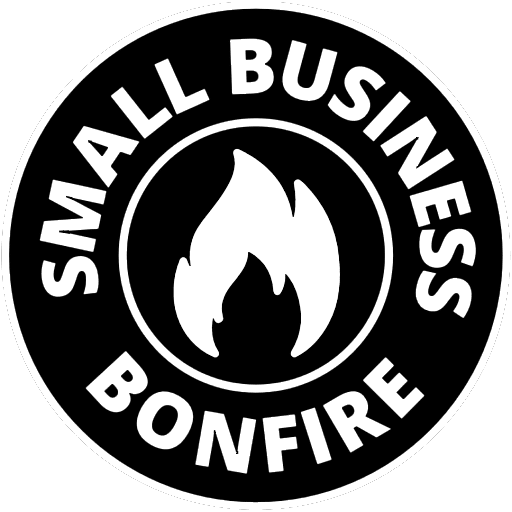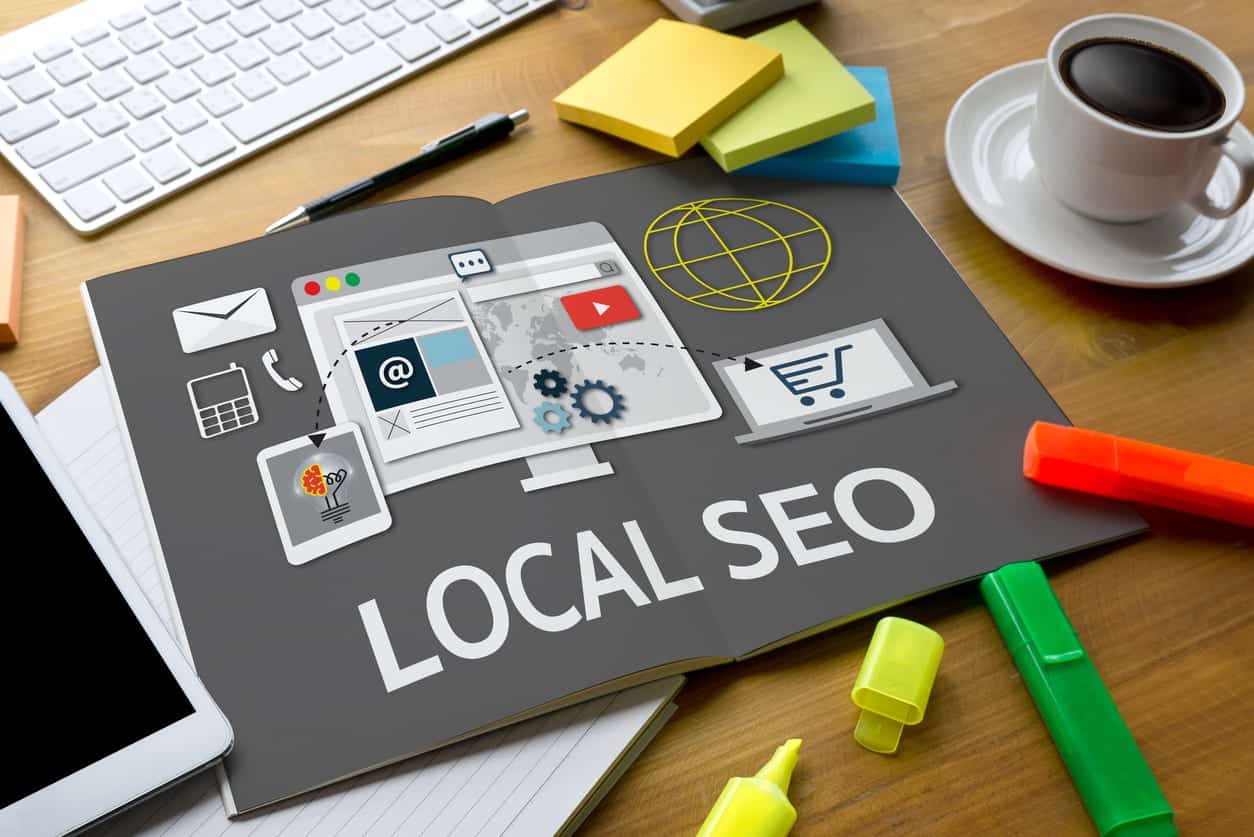By Aaron Watts
Local SEO is an extremely important and effective strategy when it comes to outranking your competition in search results. This guide should help give you some insight into what Local SEO is and provide you with knowledge that will allow you to build and implement an effective strategy.
Understanding Local SEO
Local SEO is the part of the SEO world that deals with search engine optimization for local businesses. Well-structured and effective Local SEO campaigns should allow you to rank highly in both Google’s ‘Map Pack’ and ‘Organic Search Listings’.
Over the years local SEO has developed a huge amount. It used to be pretty similar to SEO, but nowadays our search engines are much more complex.
Local SEO helps boost your rankings when people are searching for a product or service from a certain location.
Being right up there in the rankings for location based searches is very important for all small businesses. Local SEO can level the playing field when it comes to competing with your larger competitors who operate all over the country.
Mobile Rankings
According to studies, roughly 56% of on the move mobile traffic has local intent. This is because people who are searching on their mobile whilst they’re out and about are more than likely looking for something instantaneously.
These types of mobile searches generate a very high CTR (Click Through Rate) as well as a high Conversion Rate for the highest ranking sites.
Google My Business
Before you get started with what you may believe to be the right processes, you first need to make sure you have a well optimized Google My Business page.
Formally known as ‘Google Places’, Google My Business is now one of the most important things to consider when it comes to local SEO. Without a Google My Business page you won’t be appearing on the local Map Listings that appear for a large amount of local queries.
Luckily getting started on Google My Business is easy. All you need to do is follow the simple steps here.
Optimizing Google My Business
A key thing to remember when it comes to optimizing your Google My Business page is to ensure that all of the information you’ve provided is correct; especially your location. If the information provided isn’t correct, then even if you do manage to generate a lot of impressions and clicks, the chance of a conversion drastically diminishes.
On top of this there are a few other things to consider when optimizing your Google My Business page:
- Make sure you profile is 100% completed.
- Choose engaging and interesting images.
- Ensure the name of the image file you upload is relevant to your business/brand.
- Place your business in the correct categories – don’t just add categories for the sake of it, (this is bad practice and not looked upon favourably by Google).
Keyword Research
Making sure you’re optimizing for the correct keywords is the bread and butter behind any kind of SEO strategy; this is no different when it comes to local SEO. Many people are often drawn into the trap of optimizing for keywords that generate the most impressions; in reality, concentrating on the most relevant keywords for your business should be the priority.
For example, if you’re a hairdresser that only does men’s cuts then you should be looking to rank well for terms such as:
- Men’s hairdresser
- Men’s hair salon
- Gents hairdresser
These terms are directly related to what people will find when they click through to your businesses website. This way those who click through are more likely to convert and can be considered good traffic.
The danger is if you optimize for terms that are too broad. If the example above was optimize for ‘hairdresser’ as opposed to ‘men’s hairdresser,’ then there’s a good chance that around 50% of their traffic would be women who aren’t interested in their service.
Google Keyword Planner
The Google Keyword Planner is no doubt one of the best tools when it comes to doing your keyword research. It’s used by a large number of marketing agencies and SEO experts when they’re developing both their own and their client’s strategies.
In order to use the Google Keyword Planner you’ll first need to log-in to your Google Adwords account. If you don’t have one then don’t worry, it’s easy enough to set one up.
Once you’re into your AdWords account, navigate your way to the Keyword planner via the tools tab (within the menu), then select ‘Search for new keyword and AdGroup ideas.’
It’s then time to brainstorm a few key phrases that are relevant to your businesses. For now, let’s use the earlier example of, ‘men’s hairdressers,’ ‘book men’s haircut,’ etc. Type these keywords into the planner; remove the default country and specify the location that you’re trying to target with your business then simply click ‘Get Ideas.’
On the next page click on ‘Keyword Ideas.’ This will bring you up a long list of suggested keywords based on the list you originally entered. You’ll also see that these keywords are accompanied by ‘Avg monthly searches’ which may give you some indication as to what the most common searches are.
If you can find keywords that are relevant to your business (and that also have high Avg monthly searches) then you could be on to a winner.
Localizing Your Keywords
Adding in locality to your keywords is as simple as adding a location to them. But despite its simplicity, doing this is vital when it comes to local SEO.
Following on from the above example, let’s say that the men’s hairdresser is based in London (UK). The local keywords would be as follows:
- Men’s hairdresser in London
- Men’s hair salon London
- Gents hairdresser in London
These local keywords will have significantly lower search traffic than the non-local keywords; they’re far more relevant to your business.
Long-Tail Keywords
On top of localizing your keywords, it’s also a good idea to include some long-tail keywords. Long-tail keywords are three and four keyword phrases that are very specific to your business or whatever you’re selling.
Your long-tail keywords should signal intent to buy; ‘book men’s haircut London’ would be a great long-tail keyword.
On-Page SEO
Now you’ve come up with a comprehensive list of keywords and terms that you want to be ranking for, it’s time to look at your on-page content.
Title Tagging
A title tag is the text that appears in the search engine results as the title of your listing. Your title tags are one of the most important ranking factors when it comes to on-page SEO.
The title tag helps the search engines understand what the page is actually about, so be sure to include your most important keyword and location within it. If you’re selling ladies trainers, include the phrase ‘buy ladies trainers’ (or at least ‘ladies trainers’) within the title tag of the page that showcases your range.
One thing to consider when it comes to title tags is their length. It’s important not to make them too long otherwise search engines may display a truncated version of them; potentially missing out your keywords (below 55 characters is recommended).
Meta Descriptions
A meta description is part of your listing and is displayed under the title tag. Your meta description should be a short, concise piece of information that lets people know what they’ll find if they click-through to your page. Your meta description should also include some of your most valuable keywords.
One vital mistake that many local businesses make is not actually specifying their meta description. If you don’t actually specify a meta description search engines will display the first sentence or so of your webpage (160 characters). Not only is this bad practice, it also doesn’t necessarily include the correct keywords or information; leading to lower rankings and a poor CTR.
Linking: Inbound and Outbound
One of the biggest factors that search engines take into consideration when determining rankings is how trusted the content and the content’s host site is. The way that you can prove that your site/content is trustworthy is by having both inbound and outbound links within your content.
Inbound Links
Generating inbound links to your website isn’t easy, but trust us, it can be done. By creating great content you’ll naturally attract links; as a local business there are many untapped resources when it comes to link building.
Local listings and other local businesses are a great way for you to gets links into your site. If you really tap into your local resources then you should be able to create a strong backlink profile to your website.
This Link Building Guide put together by founder of Banklinko, Brian Dean is a great resource when it comes to understanding more about how to generate backlinks.
Linking Out
Linking out to other authoritative sites will also benefit your search rankings. Linking your content out to other relevant websites that are already held in high regard by the search engines is a good way to prove you know what you’re on about.
You can analyze how well other sites are viewed by the search engines by looking at their Domain Authority and Trust Flow using tools such as Moz and Majestic.
URL Structure
When you create a new page/post on your site it’s key that the url of that page is relevant to the content within it. With Local SEO it’s important to include your location in some of the key url’s on your site; product/service pages should include location eg. www.mybusiness.com/hairdressers-mens-london.
Images
Images are extremely powerful, yet surprisingly underused within many local business websites. For Local SEO purposes, it’s the actual content of the image that matters; although ensuring the copy is relevant and high-quality is always good practice. It’s the way those images are optimized that’s key.
Images should all be as small as possible (without taking away from visual quality) as this reduces the load-time.
On top of this you should always give each image you upload some ‘ALT Text.’ As search engines can only understand text, the ‘ALT Text’ allows search engines to understand what the image actually is. You should use this to explain what the image actually is, whilst also trying to include your keywords; ALT Text should be as short and specific as possible.
The Overall Importance of Local SEO
When it comes to marketing for a local business, Local SEO is undoubtedly one of the most effective strategies that you can implement. Without proper Local SEO campaigns you won’t gain any ground in the search rankings, therefore you’ll be missing out on traffic (and subsequently sales).

